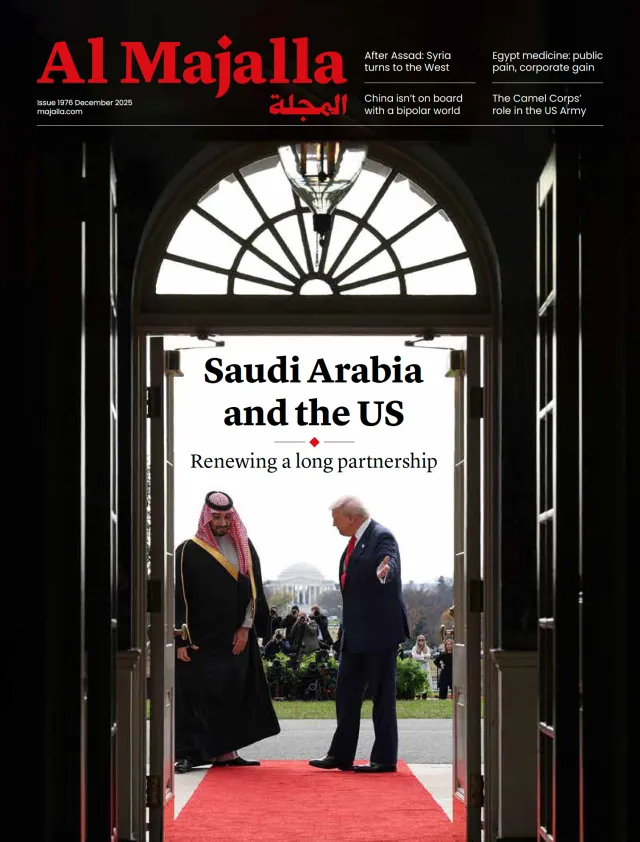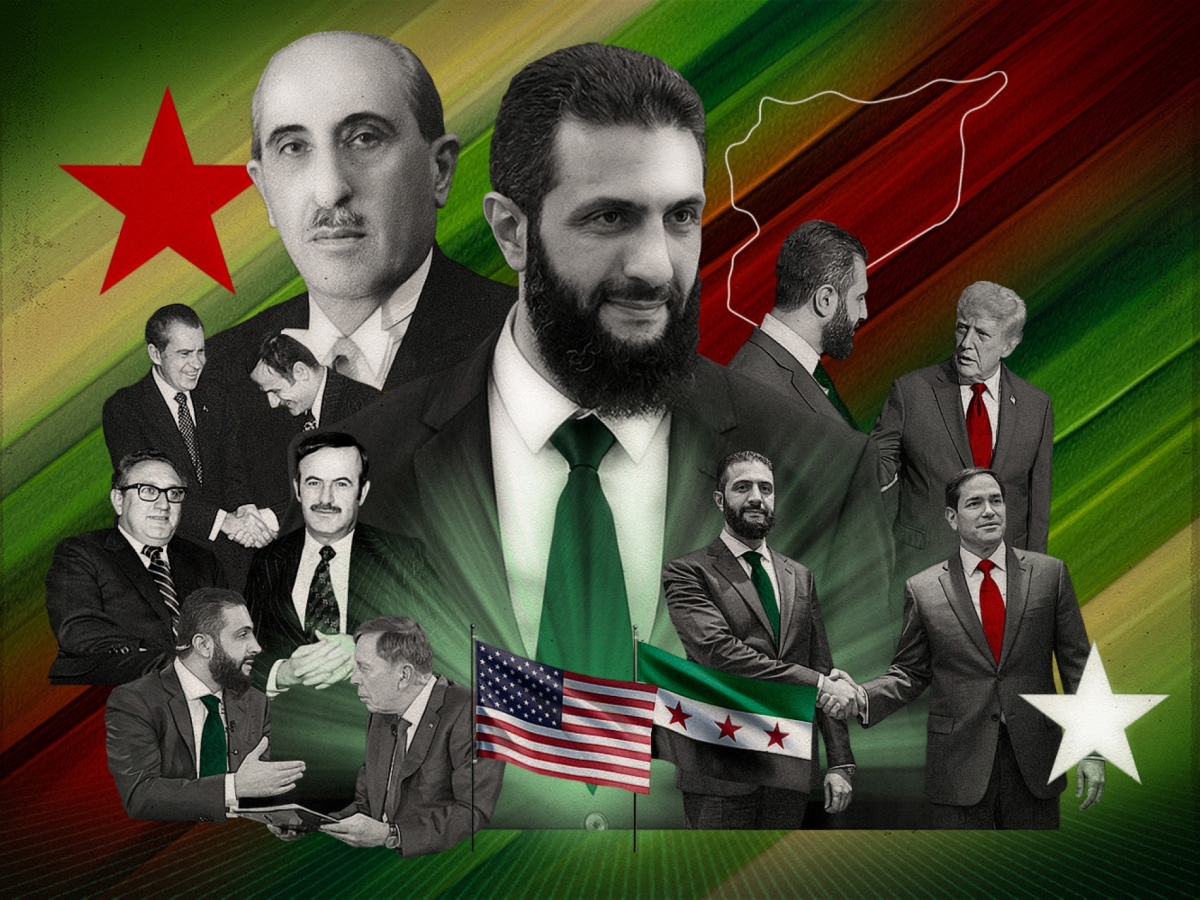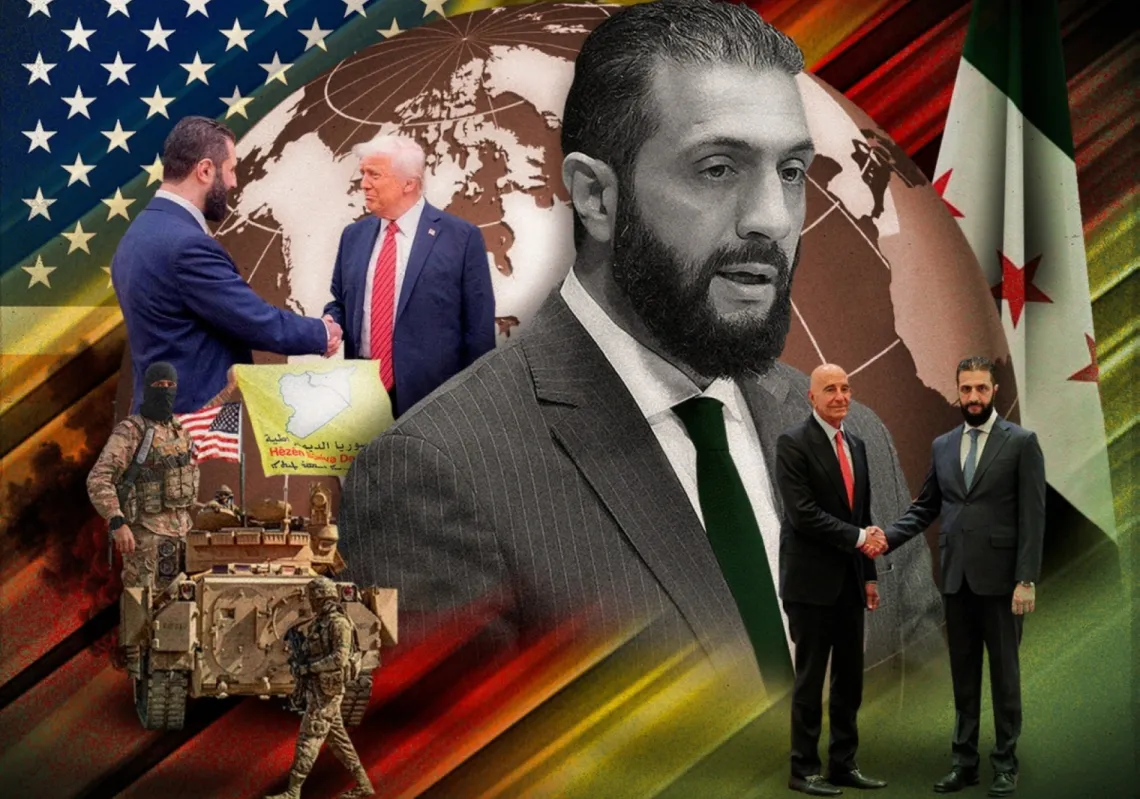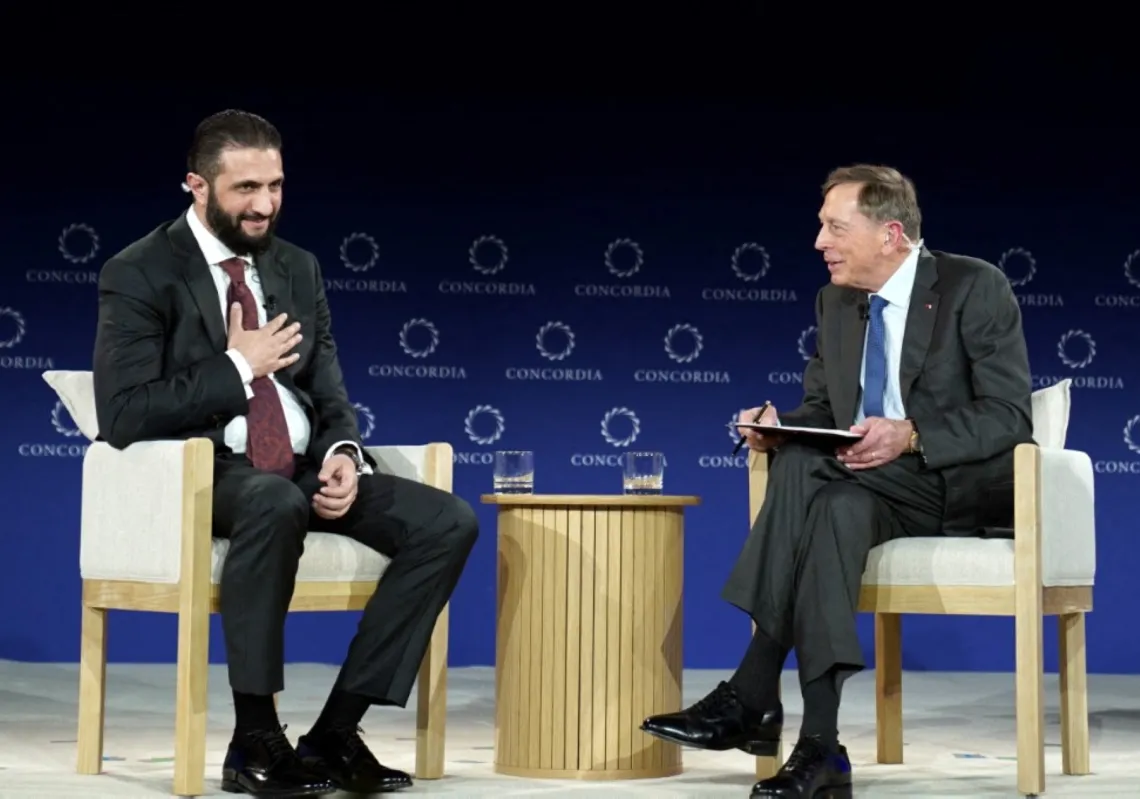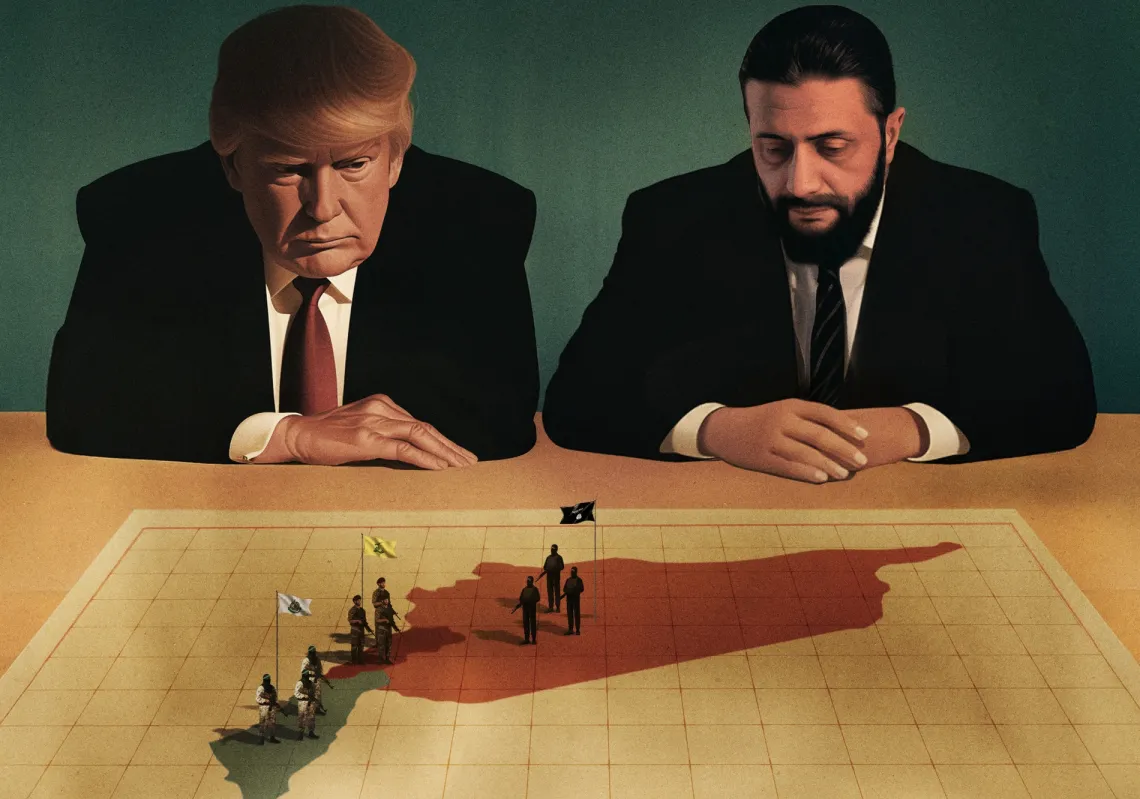Syria stands at a crossroads ahead of a second official meeting between Syrian President Ahmed al-Sharaa and US President Donald Trump, when the former will be welcomed to the White House on Monday, 10 November 2025.
Al-Sharaa made his first US visit earlier this year to attend the UN General Assembly in September and briefly met with Trump. Before that, the two leaders met for the first time in Saudi Arabia on 14 May 2025, when Trump made the historic announcement that the US would lift sanctions on Syria.
Al-Sharaa's Monday visit will be the first by a Syrian president to the White House in history, noting that Muhammad Ali al-Abid visited it before becoming president in 1932, when he presented his credentials as an ambassador of the Ottoman Empire in 1908, as well as Nazim al-Qudsi, when he was an ambassador in 1944, years before being elected president in 1961.
President Shukri al-Quwatli visited America in the early 1960s, after leaving office in 1958, but he stayed in Houston for treatment and did not visit Washington. As for the presidential summits, there were several during Hafez al-Assad's era, with Richard Nixon in Damascus in 1974, with Jimmy Carter in Geneva in 1977, with George H.W. Bush in Geneva as well in 1990, and with Bill Clinton in Damascus (1994) and Geneva (1996, 2000). Each time, several pivotal issues were placed on the negotiation table, and a fundamental change in Syria's foreign policy occurred, as is the case today with the increasing talk of Damascus's imminent entry into the international coalition against terrorism.
Today is no exception, with increasing talk of Syria opening channels of communication and agreement with Israel. Already, Sharaa's administration has suspended political ties with Palestinian factions.

Gone for good are the days of Syria being part of the so-called 'Axis of Resistance'—an Iran-based alliance that was crushed to smithereens first by the destruction of Hamas in Gaza, followed by Hezbollah in Lebanon and the killing of its leader, Hassan Nasrallah, last September, followed by the toppling of Bashar al-Assad in December 2024.
Below is the history of Syrian-American summits since the opening of the Syrian Legation in Washington in 1944
The summit that never was: Quwatli–Roosevelt (1945)
Much like Saudi Crown Prince Mohammed bin Salman's pivotal role in bringing Trump and al-Sharaa together in Riyadh, his grandfather, King Abdulaziz, had arranged a historic summit between Presidents Shukri al-Quwatli and Franklin D. Roosevelt (FDR), scheduled to take place in Egypt in 1945.
This was less than a year after Syria and the US established diplomatic relations, and on the heels of both the Yalta Conference and the Saudi king's historic meeting with Roosevelt on February 14, 1945.
No Syrian president had ever met an American president before, except for Muhammad Ali al-Abed, who had a cordial encounter with President Theodore Roosevelt back in 1908, but this was 24 years before being elected president of Syria, at a time when serving as Ottoman ambassador to Washington. Teddy Roosevelt would later visit Damascus in April 1910, but only after leaving the White House.
The Quwatli-Roosevelt meeting never took place; however, due to Roosevelt's deteriorating health, it was instead supplemented with a Syrian-British summit, also orchestrated by the king of Saudi Arabia, which brought al-Quwatli to the table alongside Winston Churchill. Syria declared war on Nazi Germany and, in return, was invited to attend the founding conference of the United Nations in San Francisco that April. This international embrace would eventually lead to Syria's liberation from French rule in April 1946.
Syrian-American relations deteriorated sharply after Roosevelt’s death and during the 1948 Palestine War. Subsequently, Damascus would ally itself with the USSR during the Cold War, leading to a suspension of relations in 1957. Ambassadors were only restored after the collapse of the Syrian-Egyptian union in 1961, only to collapse again right after the June 1967 war with Israel. And they would remain in shambles until Hafez al-Assad came to power in 1970, restoring embassies in 1974.
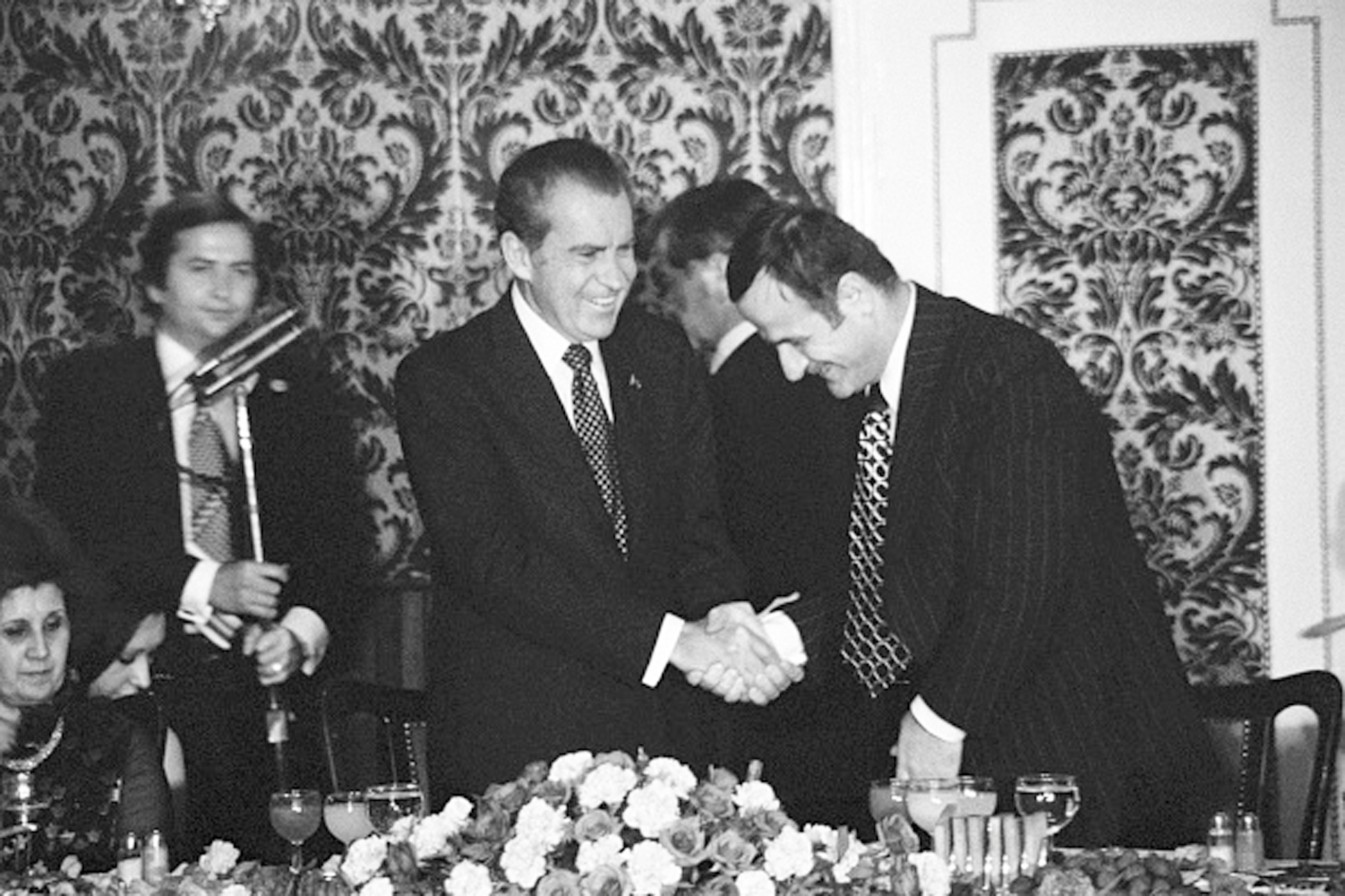
First summit: Assad–Nixon (1974)
On 15 June 1974, Richard Nixon visited Damascus, the first official visit by a US president to Syria. The trip had twin objectives: advancing regional peace on one front and diverting attention from the raging Watergate Scandal on the other. The Nixon Administration had already begun working with Egyptian President Anwar Sadat towards peace, and Nixon wanted Syria to be a partner in that initiative.
For his part, State Secretary Henry Kissinger refused to give Syrian President Hafez al-Assad a written pledge regarding Israeli withdrawal from the Golan Heights, occupied since 1967. The summit succeeded in restoring diplomatic ties, but little was achieved in terms of Syrian-Israeli peace. Nixon would resign on 8 August 1974, less than two months after his Damascus visit.
Second summit: Assad–Carter (1977)
On 9 May 1977, President Jimmy Carter met Hafez al-Assad at the Intercontinental Hotel in Geneva, five months after having succeeded Gerald Ford in the White House. He once again sought Syrian engagement in a regional peace process, but al-Assad's goal this time was more personal, wanting international support for his escalating showdown with the Muslim Brotherhood at home, and fallout from Syria’s intervention in the Lebanese Civil War since 1976.
The Ford Administration did not oppose Syria’s entry into the Lebanese quagmire, so long as its purpose was to fight Palestinian militias. Al-Assad got what he wanted, and while squirming out of any deal for peace with Israel. Far from it, he became one of the first and loudest Arab leaders to condemn Sadat's 1977 visit to Jerusalem, followed by the 1978 Camp David Accords. After leaving the White House in 1981, Carter visited Damascus frequently, where he met with al-Assad in March 1983 and again in 1987 and 1990.

Third summit: Assad–Bush (1990)
During the Lebanese Civil War, Syrian-American relations fluctuated. Despite repeated visits by American officials, including Donald Rumsfeld and George Shultz, Hafez al-Assad never met with President Ronald Reagan, although they did speak by phone. Following the Marine barracks bombing in October 1983, Syrian forces were struck by the US military, accused of supporting Iran-funded non-state players and terrorist organisations in Lebanon. That did not prevent al-Assad from securing the release of captured US Navy pilot Robert Goodman in 1984, as a gesture of goodwill towards the Reagan Administration.
When Saddam Hussein invaded Kuwait in August 1990, a US-led coalition was formed to expel his army, with Syria becoming a major player. Then-King Fahd talked al-Assad into joining Operation Desert Storm, to liberate Kuwait and protect Saudi Arabia from Saddam's madness.
On 23 November 1990, al-Assad sat down with President George H.W. Bush to sort out the details in Geneva. This summit was the most consequential to date, leading to Syria’s official participation in Operation Desert Storm and later, in the Madrid Peace Conference. In return, Syria received the green light to wrap up its war in Lebanon after just defeating General Michel Aoun in October 1990. Al-Assad allowed him a safe exit to France, and the US tacitly approved Syria’s continued military presence in Lebanon—seen by many as a reward for its role in the liberation of Kuwait.
Fourth summit: Assad–Clinton (1994)
One year after Bill Clinton came to office, he met with Hafez al-Assad in Geneva on 16 January 1994. These were great times for the Middle East, months after Yasser Arafat and then-Israeli premier Yitzhak Rabin had signed the Oslo Accords in September 1993.
The Geneva summit aimed to advance a peace offer made by Rabin, who had famously "deposited" it in Clinton's pocket. The Rabin Deposit contained a clear pledge for Israel's withdrawal from the Golan, and Clinton wanted to gauge the Syrian leader's thoughts on this and what concessions he could offer from his side.
Confidence-building measures were discussed, but al-Assad insisted on full withdrawal first. The only tangible outcome from this summit was al-Assad's approval to lift a travel ban on Syrian Jews, allowing them to emigrate to anywhere except Israel.
Fifth summit: Assad–Clinton (1994)
On 27 October 1994, Clinton arrived in Damascus—his first visit to the Syrian capital and only the second by a US president since Nixon came to the Syrian capital exactly 20 years earlier. Jordan and Israel had just signed the historic Wadi Araba Agreement two days prior, and Clinton wanted progress on the Syrian track, demanding that al-Assad halt his support for Hezbollah and expel Palestinian factions based in Damascus. Though no major breakthroughs occurred, the summit bolstered al-Assad’s regional standing, and the two men would meet again, albeit briefly, at King Hussein’s funeral in February 1999.

Sixth and last summit to date: Assad–Clinton (2000)
Under US mediation, Syrian-Israeli negotiations intensified in the 1990s. Al-Assad sent Chief of Staff Hikmat al-Shihabi to Washington to meet his Israeli counterpart, Amnon Shahak, and in January 2000, direct talks were held in Shepherdstown between Israeli Prime Minister Ehud Barak and Syrian Foreign Minister Farouk al-Shara. Clinton, of course, was present.
These talks followed stalled efforts during Benjamin Netanyahu’s first term (1996–1999), and after replacing him, Ehud Barak pledged to jumpstart the process and honour the Rabin Deposit (Rabin himself had been assassinated by an Israeli extremist in November 1995).
Controversy arose during the final stages of the US-sponsored talks, when Clinton assumed that al-Assad would accept joint sovereignty over Lake Tiberias. Based on this, he requested a meeting with al-Assad in Geneva on 26 March 2000.
But by then, the Syrian president was old, frail, and dying. His sole focus was to secure his son Bashar's succession, rejecting what Clinton was saying and denying that he ever accepted joint sovereignty. The meeting was brief, and no minutes were recorded. Al-Assad returned to Damascus empty-handed and died on 10 June 2000.

